Related Research Articles
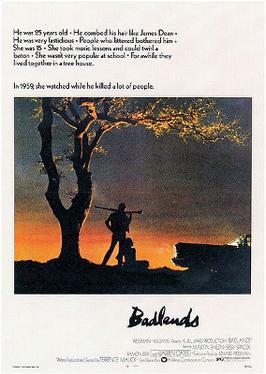
Badlands is a 1973 American neo-noir period crime drama film written, produced and directed by Terrence Malick, in his directorial debut. The film stars Martin Sheen and Sissy Spacek, and follows Holly Sargis (Spacek), a 15-year old who goes on a killing spree with her partner, Kit Carruthers (Sheen). The film also stars Warren Oates and Ramon Bieri. While the story is fictional, it is loosely based on the real-life murder spree of Charles Starkweather and his girlfriend, Caril Ann Fugate, in 1958.

Tampopo is a 1985 Japanese comedy film written and directed by Juzo Itami, and starring Tsutomu Yamazaki, Nobuko Miyamoto, Kōji Yakusho, and Ken Watanabe. The publicity for the film calls it the first "ramen Western", a play on the term spaghetti Western.
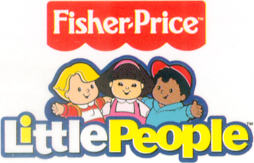
Little People is a toy brand for children ages 6–36 months and to ages 3 and up, originally produced by Fisher-Price, Inc. in the 1960s as the Play Family People. The current product line consists of playsets, mini-sets and accessories, books, CDs, and DVDs focusing on various configurations of 5 characters named Eddie, Tessa, Mia, Koby, and Sofie. Mattel reports that since the brand's launch, over 2-billion Little People figures have been sold in over 60 countries. In 2016, Little People was inducted into the National Toy Hall of Fame.

The Player is a 1992 American satirical black comedy mystery film directed by Robert Altman and written by Michael Tolkin, based on his 1988 novel. The film stars Tim Robbins, Greta Scacchi, Fred Ward, Whoopi Goldberg, Peter Gallagher, Brion James and Cynthia Stevenson, and is the story of a Hollywood film studio executive who kills an aspiring screenwriter he believes is sending him death threats.

Husbands and Wives is a 1992 American comedy-drama film written and directed by Woody Allen. The film stars Allen, Mia Farrow, Sydney Pollack, Judy Davis, Lysette Anthony, Juliette Lewis, Liam Neeson and Blythe Danner. The film debuted shortly after the end of Allen and Farrow's romantic and professional partnership, and was the last of their 13 films together. The movie is filmed by Carlo Di Palma with a handheld camera style and features documentary-like interviews with the characters interspersed with the story.

The PXL2000, or Pixelvision, was a toy black and white video camera, introduced by Fisher-Price in 1987 at the International Toy Fair in Manhattan, which could record sound and images onto inexpensive Walkman-style compact audio cassette. It was on the market for one year with about 400,000 units produced. After that one year, it was pulled by the market, but rediscovered in the 1990s by low-budget filmmakers who appreciated the grainy, shimmering, monochrome produced by the unit, and the way in which its lens allowed the user to photograph a subject an eighth of an inch away from the camera, and pull back to a long shot without manipulating a dial, while keeping as the background and the foreground in focus. It is also appreciated by collectors, artists, and media historians, and has been used in major films and spawned dedicated film festivals.
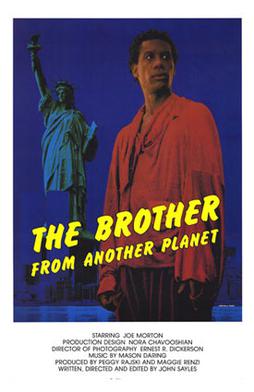
The Brother from Another Planet is a 1984 low-budget American science fiction film, written and directed by John Sayles.

Paradise, Hawaiian Style is a 1966 American musical comedy film starring Elvis Presley. It was the third and final motion picture that Presley filmed in Hawaii. The film reached #40 on the Variety weekly box office chart, earning $2.5 million in theaters. In agreeing to do this film, Elvis's manager, Colonel Tom Parker, was hoping to replicate the success of Presley's 1961 film, Blue Hawaii.
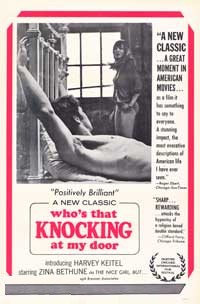
Who's That Knocking at My Door, originally titled I Call First, is a 1967 American independent drama film written and directed by Martin Scorsese, and starring Harvey Keitel and Zina Bethune. It was Scorsese's feature film directorial debut and Keitel's debut as an actor. The story follows Italian-American J.R. (Keitel) as he struggles to accept the secret hidden by his independent and free-spirited girlfriend (Bethune).

Nadja is a 1994 American horror film written and directed by Michael Almereyda, starring Elina Löwensohn in the title role and Peter Fonda as Abraham Van Helsing.
Bob Gosse is an American film producer, film director and actor.
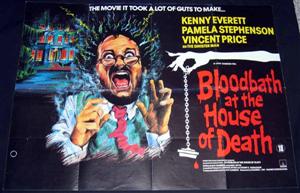
Bloodbath at the House of Death is a 1984 British comedy horror film directed by Ray Cameron and starring Kenny Everett, Pamela Stephenson and Vincent Price. It is an over-the-top spoof loosely inspired by The Amityville Horror and other horror films of the era, including Alien, The Exorcist, Poltergeist, among others, concerning the investigation by a pair of scientists of a manor house under the control of Satanist monks.
Michael Almereyda is an American film director, screenwriter, and film producer.

Amos & Andrew is a 1993 American buddy action-comedy film directed and written by E. Max Frye and starring Nicolas Cage and Samuel L. Jackson. The film's title parodies that of the sitcom Amos 'n' Andy, while the premise is akin to that of The Defiant Ones. Shot in and around Wilmington, North Carolina in 1992, the film concerns wealthy African-American playwright Andrew Sterling's (Jackson) purchase of a summer home on a predominantly white island and the problems that arise when he is mistaken for a criminal. It was released to box office failure, grossing just under $10 million domestically, and receiving generally negative reviews from critics.
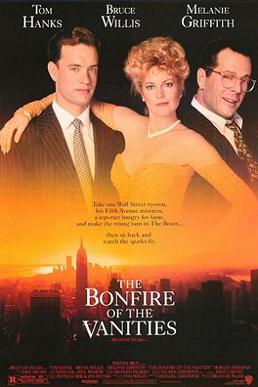
The Bonfire of the Vanities is a 1990 American satirical black comedy film directed and produced by Brian De Palma and starring Tom Hanks, Bruce Willis, Melanie Griffith, Kim Cattrall, and Morgan Freeman. The screenplay, written by Michael Cristofer, was adapted from the bestselling 1987 novel of the same name by Tom Wolfe.
Dominic Guard is an English child psychotherapist and author, formerly an actor.
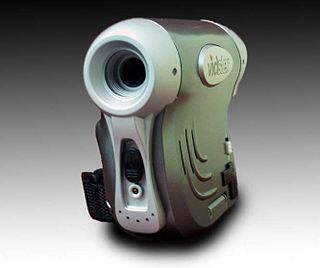
The Mattel Vidster is a digital tapeless camcorder that was marketed as a children's toy and sold around 2005. It features a 1.1-inch (28 mm) LCD display, a 2x digital zoom, and records into AVI 320x240 video files encoded with the M-JPEG codec at 15 frames per second, with 22 kHz monaural sound. It also takes still photos with 1.3 megapixel resolution.

Deadfall is a 1968 British neo noir crime film written and directed by Bryan Forbes and starring Michael Caine, Eric Portman, Giovanna Ralli and Forbes's wife Nanette Newman, with music by John Barry in his final collaboration with Forbes. Barry also plays a musical conductor in the film. It is based on Desmond Cory's 1965 thriller and shot in and around Majorca, Spain. The film's theme song, "My Love Has Two Faces", was performed by Shirley Bassey.
Girl Power is a queer feminist video made in 1992 by Sadie Benning with a Fisher-Price PixelVision camera. The video, which runs for 15 minutes, is considered at once a reflection on Benning's unhappy childhood and a celebration of her sexuality and the Riot grrrl subculture. The video was featured in "Pixel This Vision", a project organized by The Balagan Experimental Film & Video Series to "put together a program of the best of PixelVision"
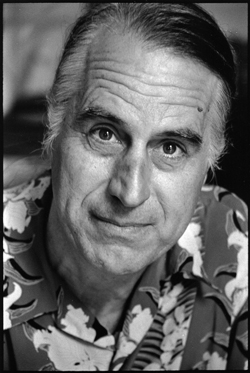
Gerry Fialka is an American experimental filmmaker, curator, lecturer, interviewer, and writer. He lectures and leads workshops on experimental film, avant-garde music and art, subversive social media, books by James Joyce, and Marshall McLuhan’s media theory. He was Frank Zappa’s archivist and production assistant for ten years, and also worked for George Carlin. LA Weekly has described Fialka as a “cultural revolutionary”.
References
- 1 2 Canby, Vincent (April 1, 1993). "Review/Film Festival; In Small Quarters, 2 Views of a Large Issue". The New York Times . p. 22.
- ↑ "Pixelvision Dreams: Why Michael Almereyda Used a Children's Camera to Make Movies". No Film School. 2018-08-10. Retrieved 2022-12-30.
- ↑ McCarty, Andrea (1997). "Toying With Obsolescence: Pixelvision Filmmakers and the Fisher Price PXL 2000 Camera". Massachusetts Institute of Technology – via CORE.
- ↑ "Past Awards". National Society of Film Critics . Retrieved 2019-11-18.
- ↑ Cohn, Lawrence (1993-01-03). "NSFC honors Clint, Thompson". Variety . Retrieved 2019-11-19.